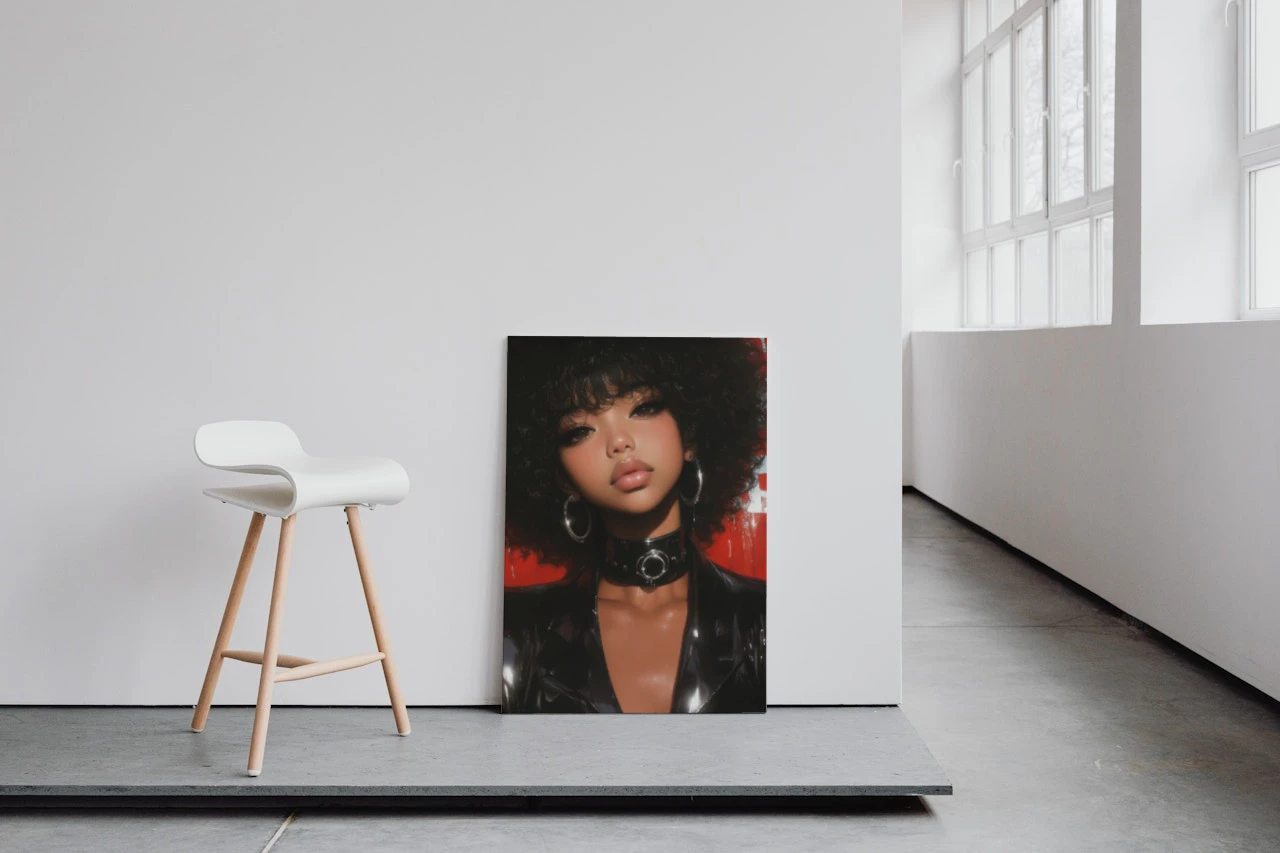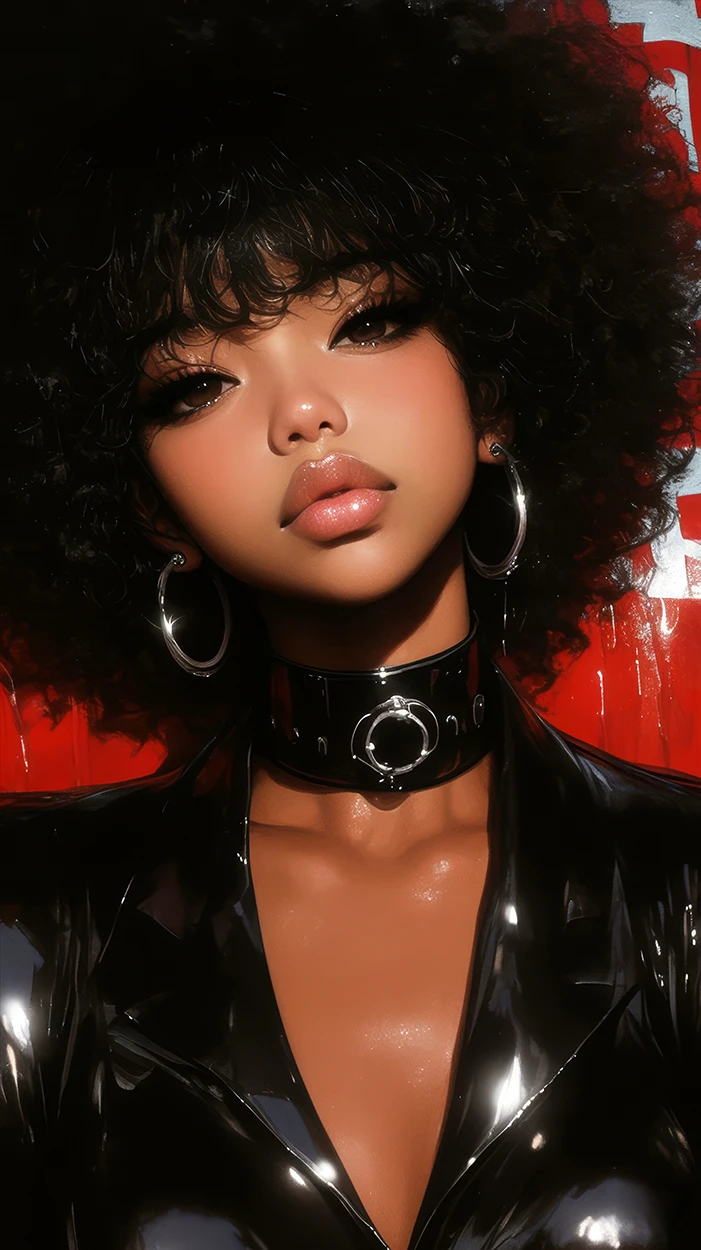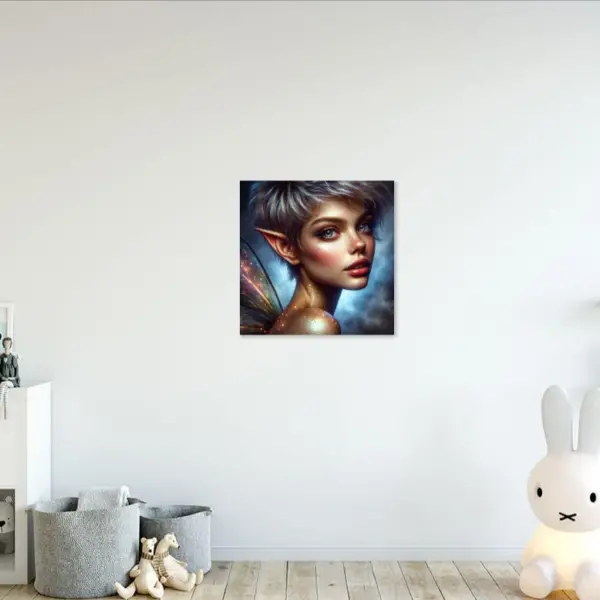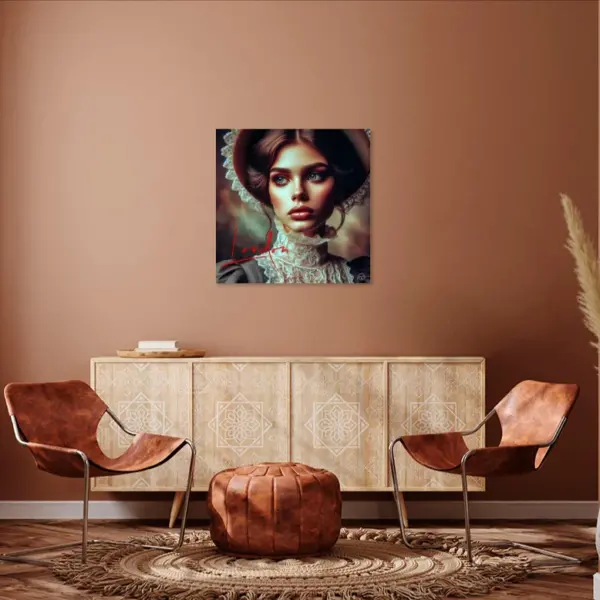Nekhbet
Her voluminous, curly black hair frames her face like a lioness’s mane, suggesting power, while the oversized hoop earrings, shiny black collar, and latex-like material of her jacket add an element of defiance and modernity. The reflective sheen on her attire creates a futuristic aesthetic, one that speaks to a dystopian or hyper-advanced world where individuality is not merely celebrated but required.
The choker, which prominently centers on her neck, hints at a more symbolic layer — perhaps an allusion to bondage, but it is not oppressive in its depiction. Rather, it acts as a crown or a medallion, denoting her status, authority, or even divinity. The woman’s stoic expression and bold, sensual presentation conjure imagery of ancient Egyptian goddesses like Nekhbet, after whom the painting is titled.
Nekhbet, the vulture goddess, was a protector of pharaohs and symbolized maternal care and rebirth. In this work, that historical depth is reinterpreted through a futuristic, Afro-centric lens. The artist seems to explore the overlap of history, power, and femininity, blending ancient mythology with modern aesthetics.
The slight redness in the background feels like it’s on fire, juxtaposing the cool, polished figure in front. It creates tension, but also balance, reminding the viewer that while this character represents control and poise, there is chaos just beneath the surface. This play of opposites, soft and hard, past and future, serenity and intensity, defines the work and makes it linger in the mind.
“Nekhbet” feels like a moment caught in the intersection of worlds — divine and human, past and future, freedom and restraint — all beautifully bound together in a portrait that speaks to resilience, authority, and perhaps even the timeless nature of the human (or godly) spirit.







